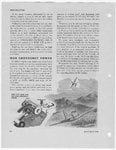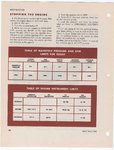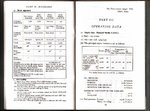I am sorry, I badly speak in English.
I live in Russia.
Tell please, whether it was possible, in air battle to use Take-off Power longer than 5-minutes.
Whether there are facts of use of mode "Take-off Power" or "Combat" is longer than 5 minutes at fighters the Mustang and Spitfire?
Why such restriction of time of use of the maximal capacity is established?
My friends speak pilots of fighter Spitfire could use in battle in air +12 lbs boost, and +18 lbs boost could use only 5 minutes.
I think it not so.
Tell please as was actually.
I live in Russia.
Tell please, whether it was possible, in air battle to use Take-off Power longer than 5-minutes.
Whether there are facts of use of mode "Take-off Power" or "Combat" is longer than 5 minutes at fighters the Mustang and Spitfire?
Why such restriction of time of use of the maximal capacity is established?
My friends speak pilots of fighter Spitfire could use in battle in air +12 lbs boost, and +18 lbs boost could use only 5 minutes.
I think it not so.
Tell please as was actually.





